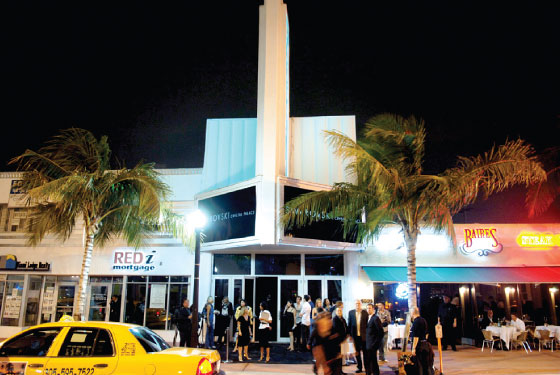
This should be a week for Miami’s homegrown art scene to bask in its role as host of the annual Art Basel fair. Prior to the fair’s 2002 arrival, downtown Miami’s bleakly industrial Wynwood neighborhood was home to only a handful of plucky galleries. Today, the drug dens and homeless encampments are still there, but the area has also become a sort of tropical mini-Chelsea, with nearly 70 different galleries, museums, and “alternative” venues. Yet the mood among many of Miami’s artists is one of anxiety and recrimination.
At one of a series of raucous “town hall” meetings this past summer, conceptual artist (and 2008 Whitney Biennial exhibitor) Bert Rodriguez begged the crowd to remember the time before Basel: “This was a small town. We were creating in a vacuum; we didn’t even know there was a market out there.” As a sea of heads nodded in assent, he thundered, “Basel is like conquistadors showing up with muskets!”
This is the Miami equivalent of longing for the raffish ungentrified New York. Much of it is just mythmaking. Several now-defunct artist-run spaces may have achieved hallowed status—but while their parties were legendary, the work on display was often painfully slight. And thanks to those conquistadors in Prada, many locals—including Rodriguez—got to quit their day jobs and focus full-time on their art. Indeed, like many of his fellow scolds, Rodriguez is complaining all the way to the bank. His October solo show at Miami’s Fredric Snitzer Gallery, called “Advertising Works!,” was a series of vinyl banner ads touting sponsors from the Standard Hotel to Stoli vodka. It earned him $40,000, all before he’d stamped his name onto the banners and sold them.
There’s no question that it’s a town in the grips of a sort of fever of art and commerce. “You’ve got all these new Miami collectors who used to be happy shopping at Neiman Marcus,” says Wynwood gallerist and Basel exhibitor Kevin Bruk. “They went to Basel for the novelty of it, saw all these beautiful people down from New York going crazy for art, and now they want in.” Dealers and collectors now prowl the halls of the city’s two art magnet high schools like NBA scouts. If there’s a looming art-market crash, Bruk warns, it’s because of fickle collectors raising unrealistic expectations. “These kids want it all, immediately, and they feel disconcerted that there’s this party going on they’re not a part of. Well, Vincent van Gogh never sold a painting in his lifetime. That didn’t stop him from working. If Van Gogh was a young Miami artist today, he wouldn’t be bitching and griping about Art Basel.”
Have good intel? Send tips to intel@nymag.com.